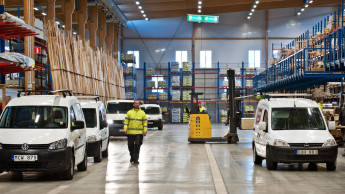GDP has developed in different ways over recent years within the EU. In most EU accession countries it increased by 50 per cent or more from 1999 to 2004. Growth of 16 to 18 per cent is expected for the period 2004 to 2006. On the other hand, growth rates of only 6 to 8 per cent are predicted for many west European countries for the period from 2004 to 2006.
There are also differences in the expenditure on flowers and plants within Europe. According to the AIPH (International Association of Horticultural Producers), the consumption of flowers and plants increased by 15 per cent in most EU accession countries and Russia from 2002 to 2004. Expenditure in the new EU accession states also saw positive development in 2005/2006, as indicated by increases of 20 per cent and more in import figures. Imports into the EU accession countries also continued to increase in the first nine months of 2006.
But a far more heterogeneous picture appears when one looks at the individual countries and individual product types. For example, cut flower exports from the Netherlands, the world's largest trading country for flowers and plants, increased only slightly, and even in some cases went down compared to the same period last year. By contrast Poland, which is the key sales market of the EU accession states, saw an increase in imports of around 25 per cent. Russian imports increased again by more than 30 per cent in the first six months of 2006, after having suffered from an import stop in 2004/2005.
While at present the spending potential of east European consumers is still far behind that of south, north or west Europe, expenditure by the approx. 220 mio consumers in east Europe (in this case, the EU accession countries from 2005 plus Russia) already comes to a total volume of around € 1.7 - 2 bn. Per capita consumption of flowers and plants amounts to about € 7 - € 8.
The largest east European markets for flowers and plants are Russia with € 725 mio, Poland with around € 400 mio and Hungary with around € 240 mio. Russia's per capita consumption amounts to € 4 for cut flowers and € 1 for potted plants (2004), which is far lower than Poland's (€ 7 for cut flowers, € 3 for potted plants) or Hungary's (€ 17 for cut flowers, € 7 for potted plants).
Other growth markets in the EU are to be found in parts of Scandinavia and parts of southern Europe. The approx. 30 mio consumers in northern Europe spend about
€ 80 per capita on flowers and plants, with a total growth in volume of 2 per cent from 2002 to 2004. Imports of the Nordic countries increased by an average of around 10 per cent in 2005.
Southern European consumers spend about € 36 on flowers and plants per capita. When compared to 2002, the market for flowers and plants in Italy, Greece, Portugal and Spain increased by about 4 per cent to around € 1.7 bn. Imports in Italy increased by about 6 - 7 per cent in 2005. The first nine months of 2006 saw an increase in exports of potted plants to Italy, while exports of cut flowers slowed down.
The around 250 mio consumers in western and central Europe spend € 70 per capita on flowers and plants, about twice as much as those in southern Europe. The entire west European market represents a volume of around € 17.5 bn, which is about 1 per cent more than in 2002. One market in western Europe currently showing above average growth is Ireland: per capita expenditure by Irish consumers increased by around 10 - 12 per cent from 2002 to 2004. This positive trend is expected to continue in the next few years as well.

 Menü
Menü













